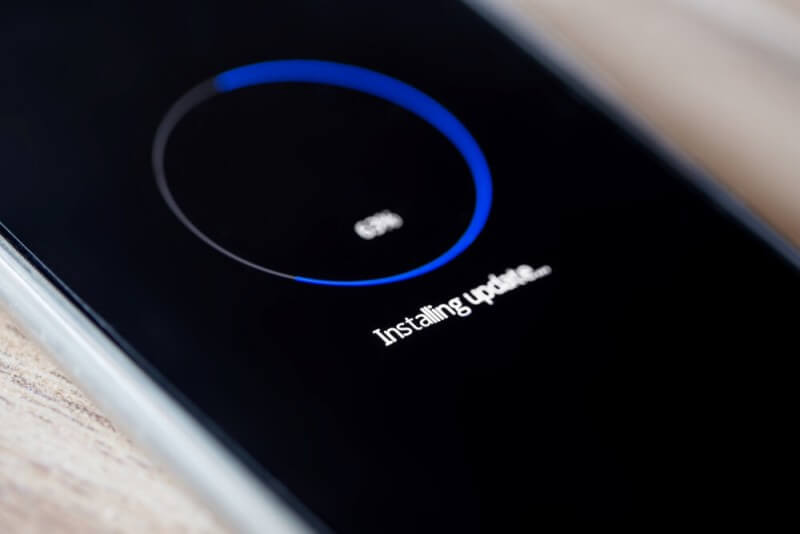Android OS is one of the popular operating systems for smartphones, tablets, and smart TVs. An OS is considered an essential part of any device; it is the core module that may bring an excellent reputation to a company or even break down. The reason is simple – the OS is the first representation in a device that communicates with the user. An operating system manages all the hardware resources, such as the camera, speakers, display, etc.
A custom ROM is a modified Android operating system developed by an Android developer with limited software features that provide a device’s performance. With a custom ROM, you can customize the user interface (change themes, status bar, navigation bar layout) and add custom modules, frameworks, etc., on your device.

Many custom ROMS come pre-rooted, which means you get the root privileges on your device out of the box and can use various Magisk modules, SuperSu, etc. Flashing a custom ROM gives you the right to take advantage of numerous benefits; let us discuss them in detail.
Content Table
What Is A Custom ROM
A custom ROM is a modified Android operating system that varies from minimum features to a fully packed operating system with advanced features. Custom ROMS are mostly built on the Android Open Source Project (AOSP), which provides essential features and minimal applications required for daily productivity, such as contacts, calendar, email, camera, etc.
Latest Updates
One of the essential features of Android is providing its users with monthly security patches and updates. Many manufacturers offer slow updates to their devices. However, on the other hand, Google releases the latest updates to its flagship devices on the same day a newer operating system is released. For manufacturers with their native operating systems based on Android, such as MIUI by Xiaomi, OneUI by Samsung, etc., push updates based on region, time, and testing.

Custom ROMS are maintained by individual users or groups working as a team with lots of competition in the market. They do this for free of cost and push updates every week or monthly, depending on the user base.
Customize UI
Custom ROMS are better known for customizations, where you can modify the user interface and give a distinctive and appealing look. Users bored with the UI’s same looks in their device can use custom ROMS theme engines with most AOSP-based ROMS like MIUI, Resurrection Remix CarbonOS, etc. However, developers provide a clean interface to the users to keep the operating system’s navigation comfortable and increase productivity. A clean user interface also helps keep the system fast with fewer transitions and effects.
No Bloatware
When you root an Android device, you get the rights to remove pre-loaded applications and Bloatware from the native operating system. Still, in many instances, the device has issues without the company’s pre-installed apps. There are no pre-loaded apps in custom ROMS; if any such apps are present, you can remove them without any error.

As we already discussed earlier, most of the custom ROMS are based on AOSP, which has the minimum number of apps present for daily usage. Developers are also given the option to select individual apps before flashing the custom ROM.
Enhanced Performance
While unwanted apps are already removed in custom ROMS, this saves storage space and increases performance by lowering the consumption of various apps in the background. Moreover, custom ROMS come with custom Kernels and thermals optimized for low RAM usage. Custom Kernels also help overclock the CPU and GPU power, providing big gaming and multi-tasking performance.
More Battery Backup
Custom ROMS are already packed with fewer apps and optimized for best performance. As no resource-hogging applications are running in the background, it helps in saving the battery power.

Many developers underlie the device when the system is idle or not used for heavy tasking, such as gaming or watching a 4K video. These features are promising and are believed to increase long-term battery health.
Mods
Mods are an integral part of Custom ROMS that offer various features and modifications to the system and the user interface. Custom Mods may range from a simple form or to a complex condition where you get the option to increase the speakers’ sound beyond the limited amount provided by the manufacturer. Other mods may include increasing the DPI of the display, gcam mods, navigation layout, Magisk modules, etc.

Custom Mods attract users to flash custom ROMS, and developers work every day to bring new features and updates to help their users easily use a stable ROM.
Unified Experience
Nowadays, many companies are launching new smartphones with upgraded hardware; users change their devices frequently. When a user changes their device from one brand to another brand, they have to migrate from one operating system to another; for example, if a user was using Xiaomi runs on MIUI and buys a new Oneplus device that runs on OneUI, they will start having trouble adapting the new environment. Custom ROMS are readily available when a big brand device is launched after the Github manufacturer releases the kernel-source codes.

Users using a particular custom ROM, such as LineageOS, ArrowOS, AOSiP, CorvusOS, etc., can flash the ROM to their device and enjoy using the same features and functionality. If the custom ROM is unavailable for the device, the user can request the previous developer to port it for their current device.
Ported Apps
Some apps are developed for specific devices only by manufacturers and come pre-installed. These apps turn out to be helpful and also help in optimizing other Android devices. One of the best applications I have encountered is the Gaming Turbo on Xiaomi devices and Fnatic Mode on OnePlus devices. With the help of custom ROMS, you can install such apps on different brands of Android smartphones. Developers can port the particular app on any custom ROM.
Portable ROMs
As discussed above, developers can even manage a ROM from a different brand to their devices, such as OnePlus ROMS, which can be used on a Xiaomi device and vice versa. This helps take full advantage of the CPU and GPU power-optimized device for a particular device. For example, the OnePlus 6T’s operating system (OxygenOS) can be ported to Poco F1 and MIUI 12 on OnePlus 6T.

Installing a Custom ROM: Important Considerations
1. Device Compatibility:
- Ensure that your custom ROM is compatible with your specific Android device model to avoid potential issues.
2. Backup Your Data:
- Before installing a custom ROM, create a comprehensive backup of your data, including apps, contacts, and media files, to prevent any loss during installation.
3. Research and Choose Wisely:
- There are various custom ROMs available, each with its strengths and features. Research and choose a ROM that aligns with your preferences and requirements.
4. Follow Installation Instructions:
- Carefully follow the installation instructions the custom ROM’s developers provided to ensure a smooth and successful installation process.
Parting Words
Installing a custom ROM on your Android smartphone empowers you to take control of your device, customize your experience, and access features not offered by the stock Android provided by manufacturers. While the process requires careful consideration and adherence to instructions, the benefits, including enhanced performance, extended device life, and improved customization options, make the endeavour worthwhile for those seeking a more personalized and optimized smartphone experience.
Frequently Asked Questions (FAQs)
- Is installing a custom ROM safe?
- Installing a custom ROM is generally safe when done carefully and following instructions. However, it carries certain risks, and users should be aware of potential issues.
- Can I go back to the stock firmware after installing a custom ROM?
- Yes, you can revert to the stock firmware by using the stock ROM for your device. It’s essential to follow proper procedures to avoid complications.
- Will installing a custom ROM void my warranty?
- Yes, installing a custom ROM typically voids the device’s warranty. Users should proceed with this in mind and understand the potential consequences.